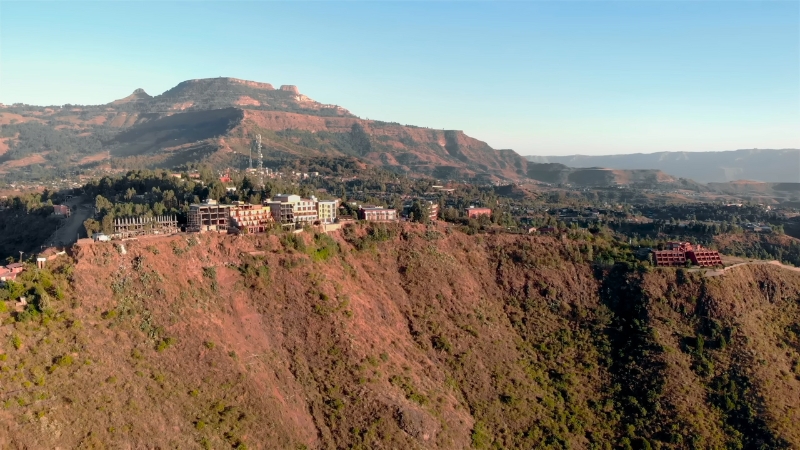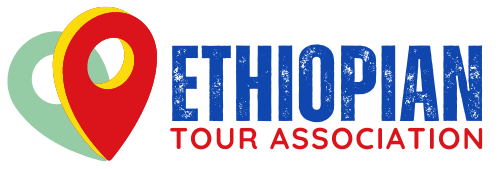If you’re dreaming of an African safari with wide savannahs, herds of elephants, and roaring lions under acacia trees, Ethiopia might not be what you expect. It doesn’t offer the kind of game drives you’d find in Kenya or Tanzania — and that’s exactly why it’s worth your time.
Ethiopia is not a safari destination in the traditional sense. It’s not about spotting the Big Five from a Land Cruiser. It’s about something far older, rawer, and richer.
Ethiopia gives you mountains instead of plains, ancient kingdoms instead of lodges, and tribal encounters instead of typical wildlife safaris.
No Big Five Here — And That’s the Point

In much of East and Southern Africa, safaris follow a familiar rhythm: drive, spot wildlife, take pictures, repeat. In Ethiopia, you won’t be chasing lions or watching elephants cross the road. The geography simply doesn’t support that.
Ethiopia’s highland terrain, with elevations averaging over 2,000 meters, doesn’t provide the kind of open habitat that large savannah animals like giraffes or rhinos need. The lowland areas are arid and extreme, not friendly to traditional safari game.
But what you do get is wildlife that exists nowhere else on Earth, including:
Endemic Animal
Where to See It
Why It’s Special
Gelada Baboon
Simien Mountains National Park
The only grass-eating monkey in the world
Ethiopian Wolf
Bale Mountains
The rarest canid on Earth, fewer than 500 left
Walia Ibex
Simien Highlands
Endangered mountain goat with massive horns
Menelik’s Bushbuck
Bale Highlands
Unique black-coated antelope
You’ll be hiking, not cruising. Ethiopia makes you work for its wildlife — and that’s part of the adventure.
What You Find Instead: Culture That Predates Almost Everything
What Ethiopia lacks in conventional safaris, it makes up for with some of the oldest, most intact cultural history in the world. You’re not just visiting a country; you’re walking into a civilization that has never been colonized, speaks its ancient script, and celebrates Christianity that predates Europe’s cathedrals.
You can visit:
- Lalibela: Home to 11 medieval rock-hewn churches carved straight into the mountainside
- Axum: Believed to be the resting place of the Ark of the Covenant
- Gondar: The “Camelot of Africa” with castles and royal palaces
- Lake Tana monasteries: Some over 600 years old, filled with frescoes and hidden manuscripts
There is no comparison between visiting a wildlife lodge and standing in a shadowy underground church carved 900 years ago, where barefoot priests still chant in Ge’ez, a language older than Latin.
Ethiopia’s Tribal South — A Human Safari Unlike Any Other
The Omo Valley in southern Ethiopia is one of the last places on Earth where you can encounter tribes whose ways of life are still largely untouched by the modern world.
This isn’t the kind of “tourist show” you see elsewhere. It’s raw, sometimes uncomfortable, but deeply real.
Here you’ll meet:
Tribe
Notable For
Location
Hamar
Bull-jumping ceremonies, body paint
Lower Omo Valley
Mursi
Lip plates, scarification rituals
Mago National Park region
Dassanech
Riverine lifestyle along Lake Turkana
Southern Omo
Karo
Elaborate body painting and hair designs
Near the Omo River
Visiting these communities isn’t like going to a museum. It’s entering another world. Yes, you need the right guide. Yes, it takes effort to get there.
But the reward is a deeper understanding of human diversity and resilience — something a lion photo can’t give you.
Landscapes That Don’t Look Real
Ethiopia doesn’t just surprise you — it disorients you in the best possible way. You think you’re coming to East Africa, and then suddenly you’re in a place that feels like it belongs to another planet entirely.
There are no endless savannahs here. No flat plains dotted with giraffes. Instead, Ethiopia gives you high-altitude drama, volcanic scars, and primeval forests that make the typical safari circuit look tame.
The Simien Mountains are the crown jewel of Ethiopia’s natural beauty. Rising above 4,500 meters, this jagged range is carved with cliffs so sheer they seem to fall into the sky. It’s a place where you hike alongside gelada baboons, their blood-red chests glowing in the sun, while massive lammergeier vultures glide overhead with three-meter wingspans.
The air is thin, crisp, and quiet. You feel small, but in the best way. No vehicles. No fences. Just wilderness that humbles you.
View this post on Instagram
The Bale Mountains offer a completely different kind of magic. Here, mist rolls over moss-covered trees in the Harenna Forest, one of the last remaining cloud forests in Africa. Hike a little higher, and the world changes again — to alpine meadows where you might spot the Ethiopian wolf, the rarest wild canine on Earth.
With their russet fur and elegant build, they look more like foxes than wolves, but they’re fierce, elusive, and sacred to the highlands. The Bale Mountains shift in color and texture with every kilometer, and you won’t believe you’re still in Africa.
Then comes the Danakil Depression, and now it feels like you’ve left Earth. This is one of the hottest places on the planet — sometimes reaching over 50°C — and also one of the most geologically active. Think acid lakes glowing neon green, salt flats that shimmer like glass, and lava lakes boiling beneath your feet at Erta Ale, the “Smoking Mountain.”
The air smells of sulfur, the landscape hisses with steam, and the Afar people still extract salt bricks here by hand, just as they’ve done for generations. You won’t find elephants here. But you’ll find awe.
PHOTO: Tis Issat waterfall at the #BlueNile near Lake Tana in Northern #Ethiopia. pic.twitter.com/Ev1B9dxFrd
— #SaveEthiopia (@OnlyOneEthiopia) July 1, 2014
And don’t forget Tis Issat — the Blue Nile Falls. Though diminished in recent years by damming, the falls are still a powerful sight during the rainy season. Local women wash clothes downstream while kids run across the footbridge, laughing and waving.
The spray cools the air, and the roar fills your chest. It’s not just about the waterfall — it’s about being part of life along the Nile, ancient and unbroken.
Ethiopia’s terrain doesn’t give you one climate or one story. It gives you a collision of extremes. One day, you’re hiking through high-altitude meadows at 3,700 meters, clouds brushing your boots. Next, you’re sweating in a bone-dry desert, watching caravans of camels walk across a salt basin. It’s dizzying, raw, and completely unforgettable.
So, Who Is Ethiopia Really For?

Ethiopia is not for tourists checking off a list. It’s for travelers willing to go off-script.
If you’re looking for air-conditioned safari trucks, sundowners by the infinity pool, or a safe photo op with a lion in the distance, this isn’t the place. Ethiopia doesn’t care about your comfort zone.
It offers beauty, yes, but also a challenge. It rewards curiosity but demands patience. It doesn’t hand you “Africa-lite.” It gives you something closer to the real thing — untouched, unpolished, and wildly alive.
Ethiopia is for:
- The rugged adventurer: You prefer climbing peaks to driving trails. You’re more excited by a five-hour hike into the Simien Mountains than by sipping drinks in a game lodge. You don’t mind a bit of dust under your fingernails.
- The cultural seeker: You want to sit with a monk in Lalibela and ask him how they carved a church from solid rock. You want to see a tribal elder lead a bull-jumping ceremony in the Omo Valley and understand the meaning behind every chant and gesture.
- The history lover: You’re fascinated by the ancient. You want to see ruins that rival Rome, kingdoms older than Egypt, and churches older than Notre-Dame. Ethiopia has been writing its own story for 3,000 years — and you’re ready to read it.
- The wildlife minimalist: You don’t need to see hundreds of animals. You want to see the rare ones — the ones that only exist here. You’ll gladly trade herds of elephants for a single Ethiopian wolf or a cliff full of geladas.
- The emotionally curious: You travel to feel something, not just to see something. You’re open to discomfort if it leads to connection. You don’t need to be entertained — you want to be moved.
Final Thought
@abyssiniaura #ethiopia #nature #ethiopian_tik_tok🇪🇹🇪🇹🇪🇹🇪🇹 #fyp #traveltiktok ♬ School Rooftop (Bird Sounds) – hisohkah
Ethiopia isn’t a safari in the traditional sense — it’s a story told in stone, mountain, fire, and bloodline.
No zebras are grazing behind your tent. Instead, there’s a barefoot priest with a thousand-year-old manuscript. There’s a monkey with a mane like a lion, screeching on a 3,000-meter cliff.
There’s a tribe painting their bodies with ash and ochre, passing traditions by firelight.
Skip Ethiopia if you want comfort and predictability. Choose it if you want your soul stirred.
